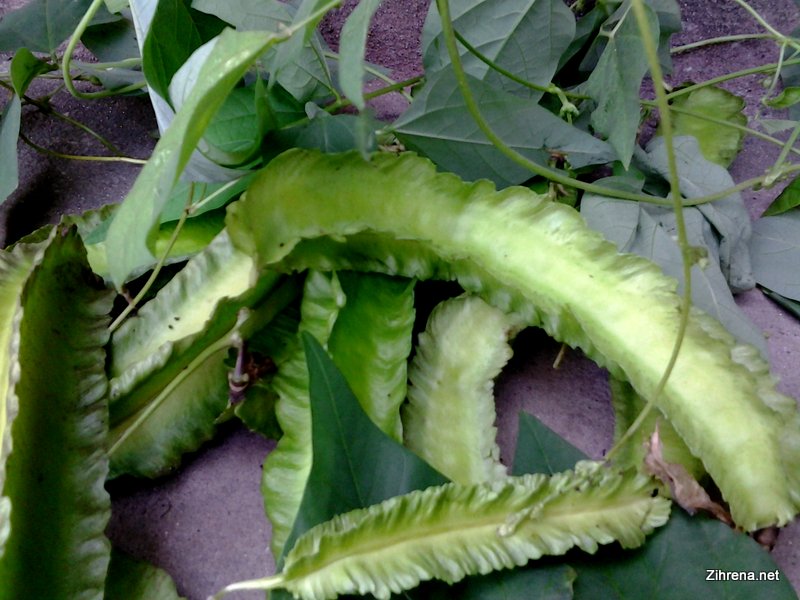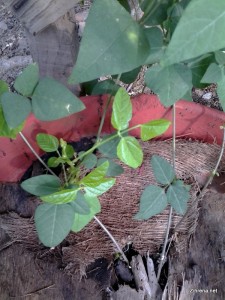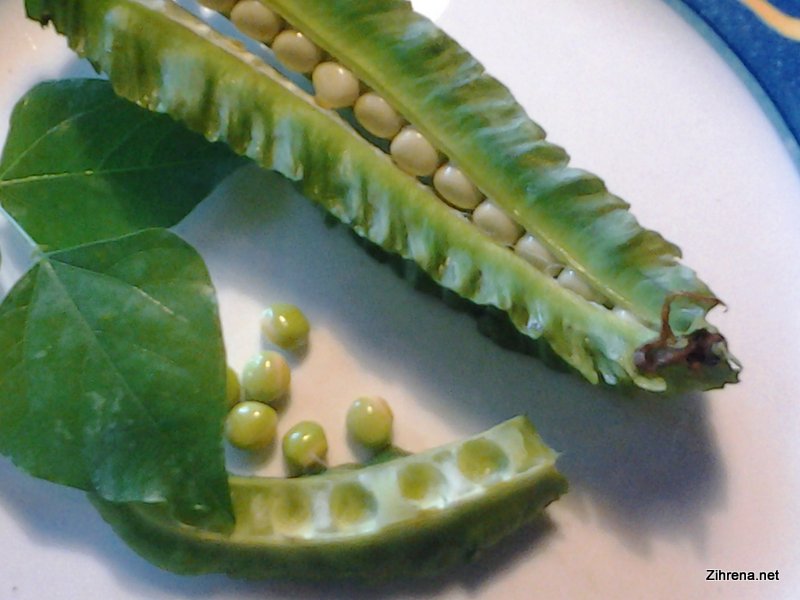Last summer, I was looking for vegetable seeds suitable for cultivation in the tropics: things that would accept (and hopefully thrive) in a climate of hot, damp, and salty. One summer’s day while garden shopping, I was inspired by a friend of mine (thanks, Kat!) to pick up a packet of seeds of the Winged Goa Bean (Psophocarpus tetragonolobus), also known as the asparagus pea, four-angled bean, or princess pea. The package claimed it was a tropical vine that grew well with heat and humidity and short days without frost (11-12 hours; we have a fairly consistent day length down here in Zihuatanejo, and we definitely do not have frost!).

Goa Beans and Vine
So last October, fairly late in the month, I planted a couple of small containers with five or six plants. The hard, pea-like seeds need to be scored and soaked well until they swell in size before sowing in order to stimulate germination; their germination rate seems to be somewhat low. However, most of my seeds germinated and grew well, and I watched as the vines flowered with small, delicate, purplish-blue flowers that then turned into quite amazing, frilly-edged, bright green pods.

Young Goa Bean Leaves
Now, at the end of January, I have just harvested a nice bunch of the beans that measure from about two inches to six inches. Unfortunately, I didn’t refresh my Goa bean memory in the growing interim and forgot most of the instructions of when and how to utilize the plant and the pea-like beans that it produces. Looking back on the literature, it turns out that I could have been harvesting the beans when they were all no more than two to three inches long, which is the choicest size for eating the bean pod whole, before the actual beans or peas inside the pods mature. Even so, when I opened up the more mature pods, the round, green beans inside were quite tasty, with a flavor that hinted of fresh peas. The pods can be sliced crosswise and used in salads when young and in stir-fries when more mature.
The leaves are edible, too, especially the tenderest, bright green shoots that have a very light and an almost sweet flavor to them, and surprisingly they do not have the grassy taste that many other types of green tend to have. The larger, darker leaves are a bit woody but not at all bitter. Although they’re too tough to eat in salads, I am going to try steaming and stir-frying them–maybe even throwing a few into a green smoothie–to see how they fare.
Besides the edibility of the beans and the leaves, the plant develops tubers underground which are also edible! And the small, delicate blossoms are reputed to be a lovely addition, both visually and for the palate, to fresh salads–with a taste reminiscent of mushrooms. I’m curious to try the tubers at the end of the season (the plant is a perennial so I’ll leave some in the ground so that they can reestablish themselves next season). The roots, which are harvested from 120 to 240 days after planting, can be cooked and eaten as potatoes, but I’ve seen no references to their actual flavor, nor have I seen any specific recipes using the tubers.
Virtually the entire Goa bean plant, then, can be used for food. Since it is a perennial, it promises to make an attractive, productive, and easily-grown tropical garden adjunct. The Goa bean–so far–hasn’t had any problems with pests or plagues, either, This is one vegetable I plan to keep around. I’m drying and saving some of the seeds and next season will see how viable they are.
The Goa bean is supposed to be very high in protein and is considered one of the best nitrogen fixers for the soil, so is useful in crop rotation. It grows in many areas of tropical Asia, the Philippines and Indonesia.

Goa Beans, pods open
Sources and further information on the Goa bean:
- http://www.specialtyproduce.com/produce/Wing_Beans_321.php
- http://greenharvest.com.au/SeedOrganic/SeedsHotHumidAreas.html
- https://sheffields.com/seed_genus_species_lot/Psophocarpus/tetragonolobus/050043
- http://www.indiaagronet.com/indiaagronet/new%20product/Contents/Pusa%20Navrang.htm
- http://www.hsaba.com/ingredients/t-z/winged-beans